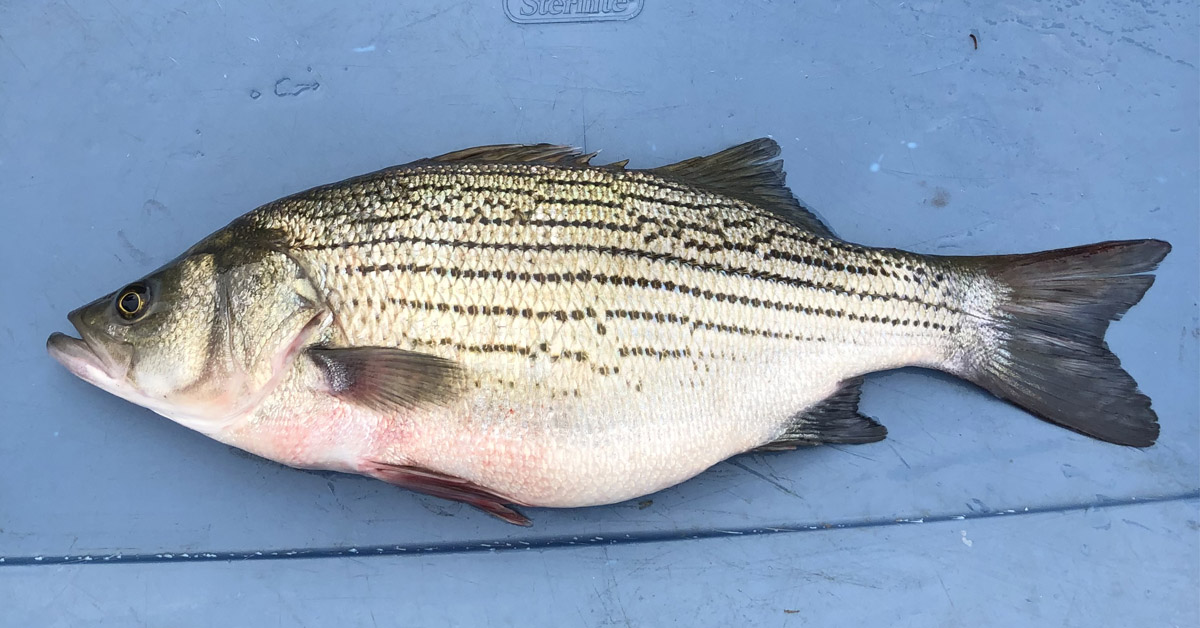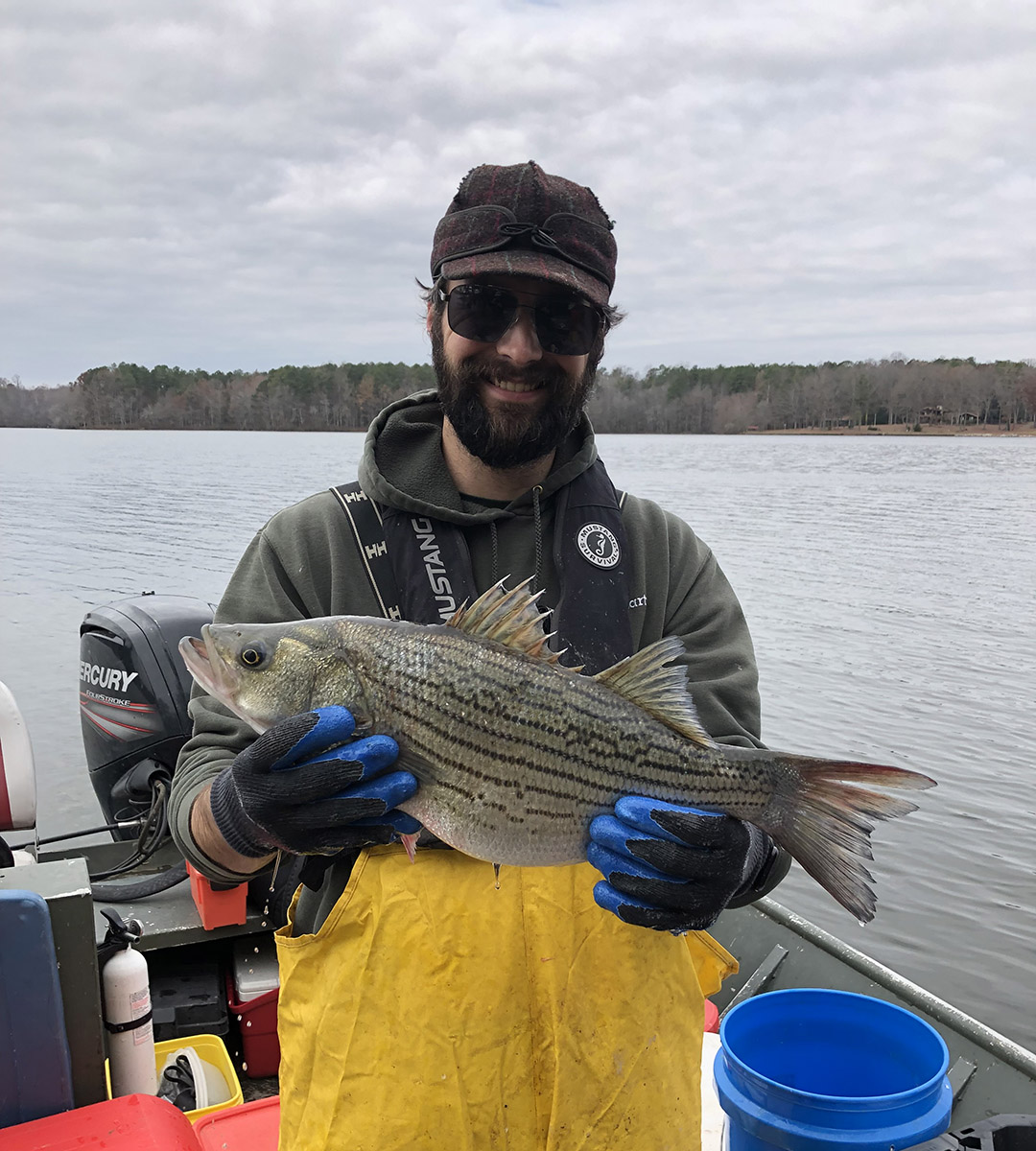
DWR stocks hybrid striped bass only into a few very specific waters, so finding one while sampling Lake Chesdin caused concern.
By Alex McCrickard/DWR
Photos by DWR
Stocking fish is a practice nearly as old as time. In fact, the Virginia Department of Wildlife Resources (DWR) utilizes stockings as a technique to manage certain fisheries across the state. From coldwater species like trout to temperate species like walleye and striped bass, DWR has nine facilities that hatch and rear millions of fish for stocking on an annual basis. Our stockings create and improve recreational angling opportunities and are guided by sound science. This is why it always comes as a surprise to us when we encounter species of fish that we never stocked in Department-managed waters.
One such surprise happened recently during an annual sampling event at Lake Chesdin, a 3,100-acre reservoir on the Chesterfield/Dinwiddie County line. DWR Fisheries staff were surprised when they encountered a hybrid striped bass in the reservoir. Hybrid stripers, also known as “wipers,” are a cross between a striped bass and a white bass, characterized by a deeper body shape and smaller head than a striped bass and broken lateral stripes. DWR stocks hybrid stripers into only a handful of very specific waters each year, including Claytor Lake and Lake Anna, and for good reason. If hybrids escape from where they are stocked into our tidal rivers, there is the potential for them to backcross with the Chesapeake Bay strain of striped bass, which could pollute the genetic integrity of this valued and treasured fishery.

Clint Morgeson, DWR regional fisheries manager, holds a hybrid striped bass collected during a December sampling on Lake Chesdin.
With spillovers happening frequently at Brasfield Dam, fish from Lake Chesdin can and do end up in the Appomattox River below the dam, which is the cause for concern in this situation. Hybrid striped bass could end up in the lower Appomattox River and ultimately the tidal James River, where they could interact with migratory anadromous striped bass moving up the river during the spring spawning run. The Atlantic Coast striped bass stock is currently overfished. The Atlantic States Marine Fisheries Commission (ASMFC) adopted Amendment 7 to the Interstate Fishery Management Plan for Atlantic striped bass with the goal of having the stock rebuilt by 2029. Competition with hybrid striped bass is an additional unwanted stressor added to rebuilding the Chesapeake Bay striped bass stock.
As a reminder to all anglers, 4VAC 15-320-60 states that it is unlawful to stock any species of fish into any public inland waters of the Commonwealth without first obtaining written approval to do so from the Department of Wildlife Resources. Additionally, 4 VAC 20-252-210 specifically prohibits the release of live striped bass and live hybrid striped bass in the waters of the Commonwealth from an aquaculture facility located within or outside the Commonwealth without written permission from the Commissioner of Marine Resources. Stocking fish without obtaining the proper permits is unlawful and punishable by up to 6 months in jail time and up to $1,000 fine §§ 29.1-103
If you encounter a hybrid striped bass in Lake Chesdin or in one of the Chesapeake Bay tidal tributaries, you can help by reporting it to 804-829-6580 or email fisheries@dwr.virginia.gov. Visit dwr.virginia.gov/fishing/ for more information about hybrid striped bass and our stocking program. Further, if you know of or see a wildlife violation, please call 1-800-237-5712 or email WildCrime@dwr.virginia.gov.


